theartsdesk Q&A: Musician Nick Rhodes | reviews, news & interviews
theartsdesk Q&A: Musician Nick Rhodes
theartsdesk Q&A: Musician Nick Rhodes
Duran Duran's synth maestro talks about his life, his music, James Bond, Facebook, Kajagoogoo and much more
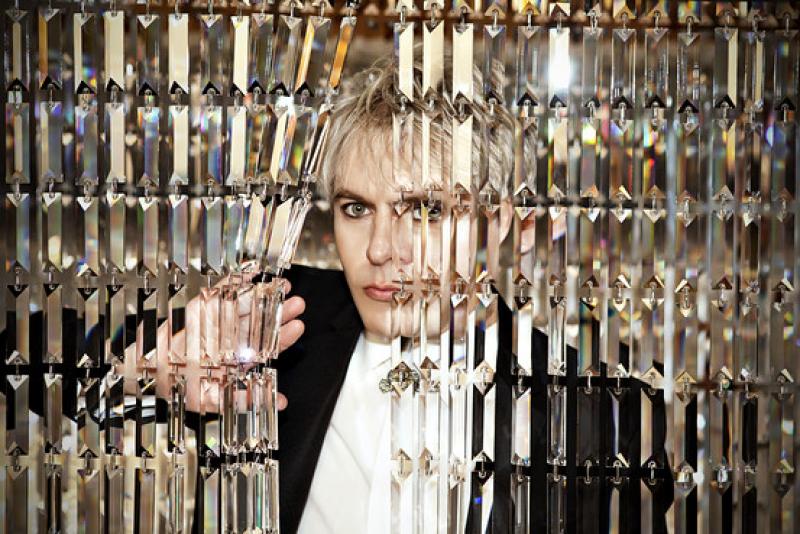
Nick Rhodes (b 1962) is a founding member of the group Duran Duran. Their synthesizer player and driving force, he is the sole member to have been in every incarnation of the band. Duran Duran started in Birmingham in 1978 when Rhodes was only 16, a post-punk synth-pop act indebted to Roxy Music and David Bowie.
Duran Duran became known as leaders of the New Romantic movement, famed for their flamboyant clothes and make-up. They became teen idols and achieved massive international success, notably in the US where they led what was termed “the second British invasion”. Their Eighties hits included “Rio”, “The Reflex”, “Girls on Film”, “Save a Prayer”, “Wild Boys” and the James Bond theme “View to a Kill”, and they were as famous for their glitzy, opulent videos.
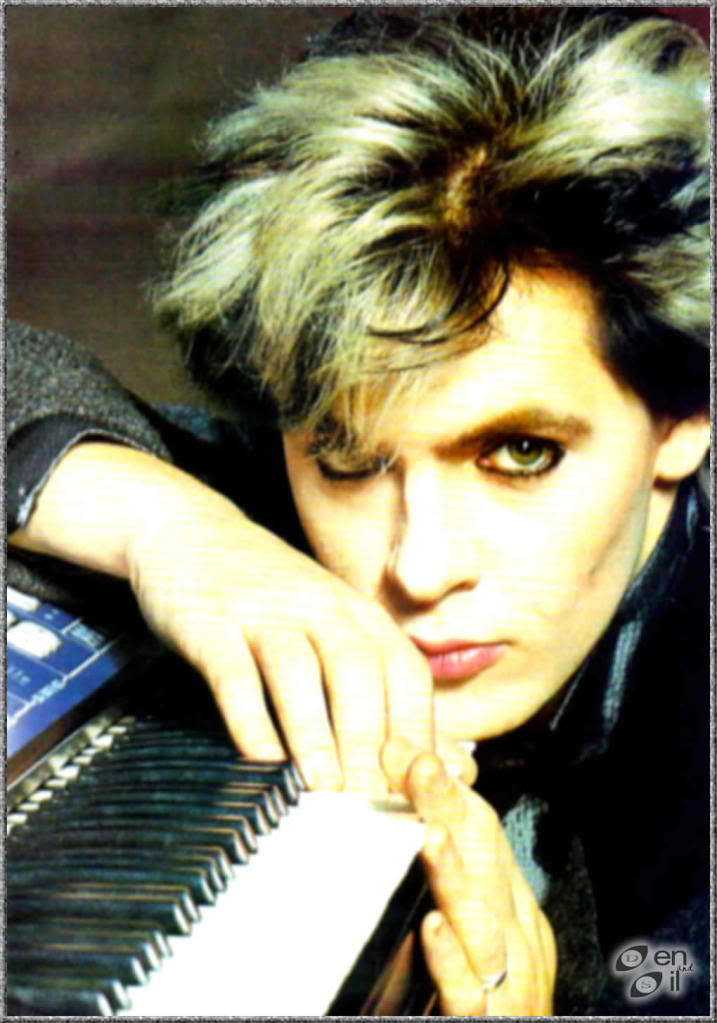 After 1986 the line-up fluctuated, with ex-Frank Zappa sidesman Warren Cuccurullo on guitar for fifteen years. Later hits included the critically rated song “Ordinary World” which won an Ivor Novello Award in 1994. The original line-up reunited in 2001 although Andy Taylor has since left. Their last album, “All You Need is Now”, their thirteenth, was produced by Mark Ronson and made a decent chart showing around the world in 2010, and Duran Duran still tour to large audiences.
After 1986 the line-up fluctuated, with ex-Frank Zappa sidesman Warren Cuccurullo on guitar for fifteen years. Later hits included the critically rated song “Ordinary World” which won an Ivor Novello Award in 1994. The original line-up reunited in 2001 although Andy Taylor has since left. Their last album, “All You Need is Now”, their thirteenth, was produced by Mark Ronson and made a decent chart showing around the world in 2010, and Duran Duran still tour to large audiences.
Rhodes, who is avidly interested in fashion, art and photography, has had many side projects over the years, including Arcadia with Simon le Bon in 1985, and The Devils with Stephen Duffy in 1999. His latest venture is resurrecting a concept album called Bored with Prozac and the Internet? which he created with Warren Cuccurullo in 1996. I meet him in a studio in Clapham. He sits relaxed on a sofa, sipping water, dressed in black with a Juicy Couture jacket. Part mischievous, genial futurist and part sybaritic playboy, his manner is slick but engaged.
THOMAS H GREEN: How did you first become interested in synthesizers?
NICK RHODES: Kraftwerk were a large part of it but I was interested because I saw them as a futuristic instrument. I tend to gravitate towards things that I think will be more interesting as time goes on. Guitars I love. I started by playing guitar. I still can’t play very well at all but it was helpful in teaching me how things work musically. Then I saw the price of synthesizers coming down. They were so unaffordable when I was growing up. You’d see Keith Emerson and Rick Wakeman with all these banks that cost thousands and thousands of pounds. I never thought I’d be able to get one but then this one called the Wasp came out in the late Seventies. It was less than £200 so I somehow managed to save enough money to get it. That really was the instrument that changed my life. I had no idea how synthesizers worked, I had no clue about waveforms or filters, nothing, but I figured I was going to learn fast. You’ve got so many more possibilities with a synthesizer to colour and paint the whole soundscape.
And yet Duran Duran are rarely mentioned in the same breath as ground-breaking electro-pop contemporaries such as OMD or the Human League. You’re usually lumped in with Spandau Ballet and Kajagoogoo. Do you think your use of synths is under-appreciated?
Yes and no. Outside the UK we get a lot more credit for experimentation and invention. We were definitely out there with a bunch of other people trying to pioneer a sound. I always point to John Foxx-era Ultravox as being a big influence because they were where we were heading before us. Those first three Ultravox albums are still terrific.
Duran Duran’s first single "Planet Earth" made number 12 in the UK charts but the second, "Careless Memories’", flopped at 37. How did that make you feel at the time?
If we hadn’t had a successful third single, the record label might have said, “One hit wonder.” That might have been sayonara, that’s it. It’s just the way things go. “Careless Memories” was picked because it had a great rock riff on it. We still play it often in the live show and it goes down incredibly well but at that time it didn’t fit with radio. It wasn’t as sing-along as “Planet Earth”, didn’t have a big chorus, just didn’t hit that chart nerve. A lot of people who had been saying, ‘Ooh, yeah, “Planet Earth” is off the blocks, they’re gonna do great,” were suddenly getting very nervous and going, “Have we backed the wrong horse here?” It was very nerve-wracking but then we did have “Girls on Film” on the album, fortunately, which re-established us.
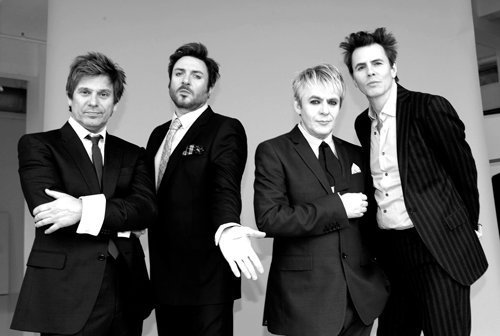 Your TV Mania album contains moments that sound like Cabaret Voltaire…
Your TV Mania album contains moments that sound like Cabaret Voltaire…
I like Cabaret Voltaire. It’s a funny mixture because when we were making it in 1996, we were making the Duran Duran album Medazzaland, trying to write these beautifully crafted songs. Then Simon hit a brick wall with the lyrics and said, “I want a couple of weeks out.” Warren Cuccurullo and I said, “Let’s do something completely different.” We were watching this TV show and I said, “Warren, these people on this show, they’re speaking in song titles,” Everything they said sounded like song titles – “Beautiful, beautiful clothes”, “I wanna make films,” “You’re dreamin’, pal”. So we started recording stuff off television, becoming completely obsessed with it, cutting things up and putting them on keyboards then he’d play one end of the keyboard and I’d play the other. We’d just make these songs like a William Burroughs cut-up. We did it very, very quickly.
It’s a concept album…
Yes, as the process developed, we decided there was a family - the father is a religious freak, the mother is a complete pillhead, the daughter just wants to be famous at any cost, the son is obsessed with video games and he’s becoming a computer hacker. Then we developed this idea, let’s get scientists to study them, lock them in a house, put video cameras on them so the scientists can see what’s going on with the moral fabric of society. We started developing it further as a Broadway musical.
So why has it taken so long to appear?
We took the finished album to the label who were absolutely horrified. They said, “We can’t put this out.” The last thing they wanted from us was a futuristic, cyberspace, sampling, internet record. Several months later this movie comes out called The Truman Show and we think, “Guess some other people had this idea as well,” and then Survivor and Big Brother and the idea is slowly left behind, gets put in a drawer, and suddenly it’s 18 years later. I thought the tapes were gone but I found them on a DAT - I had to find a machine to even play it. I thought, “Actually this is a proper time capsule,” so I said to Warren, “Do you want to put this out?” Because of the subject matter it’s even more interesting now.
Watch the video for "Euphoria"
“Euphoria” is rather lovely, almost an android ballad – who sings on it?
That was my girlfriend at the time, the lovely Madeleine Farley. We had a box in the studio that we could use to harmonize her and change the voice because I wanted it to sound completely synthetic. She had a sweet voice anyway and we got this amazing, slightly surreal robotic, but sort of edgy, crackly, sound from her.
Some of the album sounds very much of its time but some sounds like the electronica that was to come. Were you listening to electronica at that point?
We were listening to a lot of electronic music, mostly starting with Kraftwerk, NEU! And Can, then going through all the pre-punk stuff, Fad Gadget, Human League, and of course The Orb, The Prodigy, Aphex Twin.
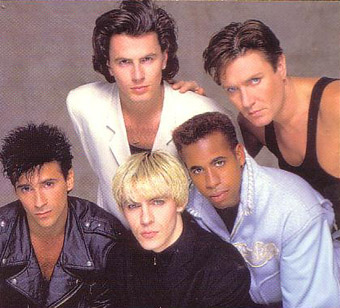 Another worthwhile side project was your and John Taylor’s compilation album Only After Dark which collected together music that was played at The Rum Runner, the Birmingham Club that was Duran Duran’s initial home and where you used to DJ.
Another worthwhile side project was your and John Taylor’s compilation album Only After Dark which collected together music that was played at The Rum Runner, the Birmingham Club that was Duran Duran’s initial home and where you used to DJ.
It was a time period that had become neglected because you had punk and then you had what became termed New Romantic but in between there was amazing music, slightly post-punk, 1978-’80. You had bands out there like Magazine and Kraftwerk making the most incredible albums, Gary Numan, Grace Jones, that’s what I used to play when I DJed. John came up with the idea.
What did you used to drink at the Rum Runner?
Vodka probably.
Was there much drugs?
I suppose probably cocaine. The atmosphere was like a party crossed with a circus, very colourful, people in the most unbelievable outfits. I’ve got photographs from that period and I show them to people and they think it’s out of a Hollywood movie. They don’t think it actually ever happened. The scene was really led by Patti Bell and Jane Khan who had a shop called Khan & Bell on Hurst street in Birmingham. They made clothes and, boy, did they make clothes. You’d look forward to whatever outfit they had on that night. There was plenty of drugs and alcohol but the scene was driven by the look, by the characters. That created an atmosphere I’ve never seen anywhere since.
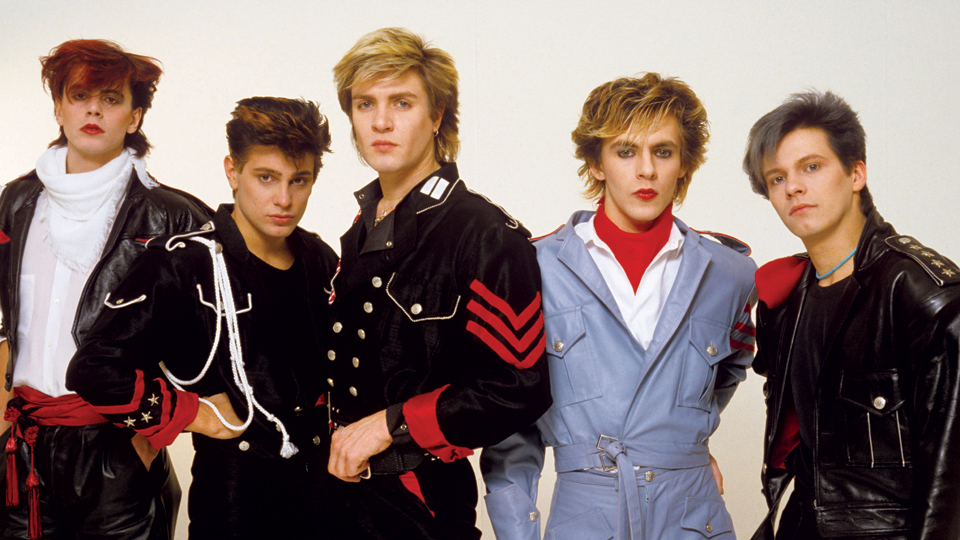 Dressed like that, fully made up, in late Seventies Birmingham, didn’t you suffer gay-bashing?
Dressed like that, fully made up, in late Seventies Birmingham, didn’t you suffer gay-bashing?
It was pretty awful. There were a lot of gay people in the scene. John and I used to come home on the number 50 bus which went from the centre of Birmingham to the Maypole, very close to Hollywood where we lived. We used to be absolutely rigid with fear getting on that bus covered in make-up, with dyed hair, wearing women’s clothing. Probably, not dresses but something we’d bought from Top Shop or Wallis. Inevitably there was someone who wanted to pick a fight but you felt you wanted to stand out. You knew you had to go for it and to back out would have been complete defeat. Yes, without a doubt it was fraught with problems.
So were you attacked?
John got in a little fracas once. Fortunately we weren’t attacked but we were abused no end.
A contender for my favourite song of 2010 was Duran Duran’s “The Man Who A Stole A Leopard”. How did that come about? It’s brilliant.
Mark Ronson said to me one day when we were in the studio, “Please can we do something like “The Chauffeur”? It’s my favourite song.” I said, “The thing is Mark, “The Chauffeur” is what it is and I don’t like trying to emulate or copy something. If you mean can we make something electronic with a rhythm box - yeah, of course." So I went into the studio on my own and I started off with the same rhythm box I used on “The Chauffeur”, the TR808. I programmed it then started playing parts on top. I didn’t know where I was heading but after a few hours Simon came in and said, “Let me sing something over it,” and we got the melody quickly. At the end of that night when we put it away I said, “We need a title - let’s call it something we’re never going to use, “The Man Who Stole A Leopard”. Then one day John said to me, “You know what, I think we should write it as “The Man Who Stole a Leopard” - it’s a great title although I don’t know what it means.” I said, “I tell you what it means, it’s about someone stealing a girl." It reminds me of that film The Collector with Terrance Stamp. I thought we should add a news story. You know that Velvet Underground song “The Gift”, that great dry macabre John Cale monologue, something like that.
You used an actual news reader.
Yeah, Nina Hossain. I did the original and then thought, “I’m not very convincing as a newsreader,” and Simon knew Nina a little and asked her.
It all seemed so unlikely that, at the time. I kept Googling, trying to find the true story it was based on.
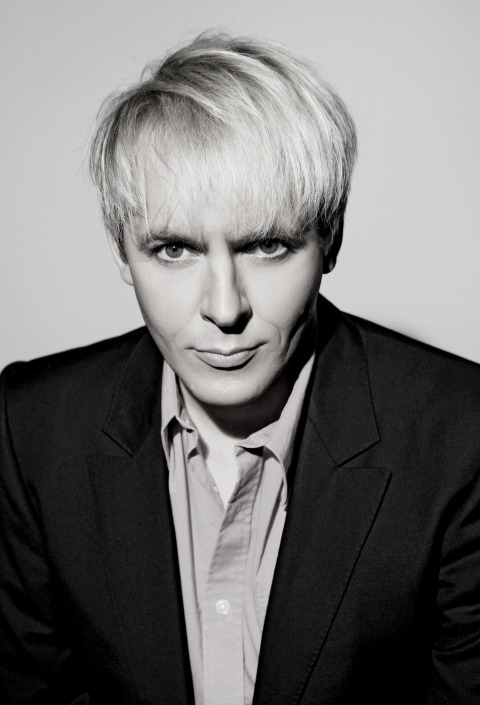 It was completely fictitious but after we put the record out there was a guy in America who was living with a whole bunch of wild animals in his house. Truth was stranger than fiction.
It was completely fictitious but after we put the record out there was a guy in America who was living with a whole bunch of wild animals in his house. Truth was stranger than fiction.
In the mid-Eighties you and Simon le Bon formed the spin-off group Arcadia, which proved successful. Were you ever tempted to shelve Duran Duran?
It did do very well. I had no idea it was going to be such a success. Obviously we had a springboard in that people knew who we were, which was useful, but you make an album that’s a bit different and you don’t know what’s going to happen. It was 1985 and we were all sick of each other, just done "View To A Kill’, had a bunch of big hits in a row. The record label were banging on our door saying “Feed us more, feed us more.” It was very intense, we couldn’t go out of our houses because there were fans everywhere, press hiding in the bushes trying to photograph you in your dressing gown when you woke up in the morning. It was actually a bit nightmare-ish by that point. Andy and John wanted to make the Duran sound much more rock, I wanted to make it much more synth and art. So we were tugging in different directions and we said, “You know what? Artistically we’re not in the same place right now - let’s do something different.” So they went off to do Power Station [with Robert Palmer and Chic drummer Tony Thompson] and Simon thought he was going to have a holiday but I said, “No, you’re not, we’re going to make another album.” The plan was we’d all come back together but only three of us made it. Andy, by then, was in his own bubble and making his own solo album, sure he was going to have a massive solo career and didn’t need the rest of the band. Roger, for completely different reasons, had taken some time to chill out. He was completely fried and went off and lived in the country for a while. That left the three of us to carry on.
This TV Mania project pre-empts the idea of Facebook and Twitter, of people announcing to the world that they’re having a cup of tea. Does it all seem somewhat narcissistic? Then again using the word “narcissistic” around someone from Duran Duran may be a bit redundant.
[Laughs heartily] I feel the same about all that as I feel about a lot of reality TV. A lot of people would be better of living their lives rather than telling people about what they’re doing and looking at other people’s lives. This whole Twitter obsession – “I’m crossing the street now and I’m about to buy a sandwich” – I’m not sure who it’s of interest to but clearly whether it’s just narcissism or people have friends who want to know what kind of sandwich they’re eating, it’s a phenomenon. My attention span is a little too long for Twitter.
You have produced records outside Duran Duran, one for the Dandy Warhols. I wouldn’t have put you two together…
Courtney [Taylor-Taylor], the singer, tracked me down. He’s a fan and he said, “Hey, will you mix our song "The Last High"?” He sent me the song but instead of just mixing it I added a lot of parts, moved it around, resampled some things and polished it up. He said, “Can we do some new tracks?” They were a lot of fun, a great dark sense of humour, fantastic attitude about music. The one thing I’ve always liked about music is catching a vibe, music needs that. One thing I loathe about the music scene at the moment, the stuff coming out of reality TV, all that manufactured homogenous junk, is that nothing has a vibe. The Dandy Warhols do - we spent our time chiselling out vibes every day.
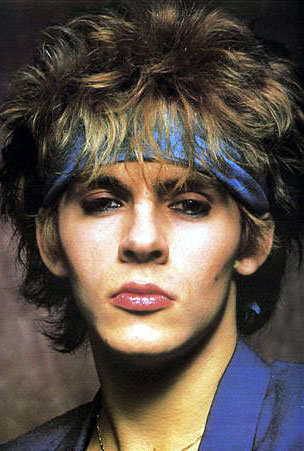 And long before them you discovered and produced Kajagoogoo…
And long before them you discovered and produced Kajagoogoo…
The band [Duran Duran] were furious with me because Kajagoogoo had a number one with "Too Shy" before we’d had a number one.
I’m not surprised they were - that’s funny.
It’s because the band wanted to take a couple of weeks off and I never take time off. This guy Limahl came up to me in the Embassy Club and said, “We’ve got some songs on this cassette and we’d love you to produce them.” I’d never been asked to produce anything before so I thought, ‘I could probably do that but is it any good?” So I stuck the cassette in the car on the way home and this song “Too Shy” came on and I thought, “Actually, that could be great,” and I had a couple of weeks free so that was that.
How do you rate the film A View to a Kill?
I haven’t seen it all the way through for quite a long time but funnily enough I did see about fifteen minutes of it three or four months ago on TV. I thought it had a real cult aspect. It’s one of the most interesting casts because you’ve got Grace Jones, Christopher Walken, former Charlie’s Angel, Tanya Roberts, and Steed from The Avengers. From that point of view I think it’s really funny. I don’t know if it’s one of the best Bond movies. I like the ones with Sean Connery in. Roger Moore was never my favourite Bond but it was a thrill to be involved.
Watch the video for "A View to a Kill"
What do you reckon to Daniel Craig?
Yeah, I think he’s really good, a much tougher Bond. I love the whole Bond franchise. You grow up in England and as a young boy you want to be James Bond, you want to drive those cars, be with those girls, it’s still the ultimate British male fantasy. We were as susceptible to that as anybody so to be able to do a song for the soundtrack was a real highlight.
You say all British males aspire to be James Bond but you seemed to aspire to be Andy Warhol.
I love the Warhol world. Certainly he was a big influence early on and remains so. You look at anything that’s modern in our world now and Andy’s fingerprints are on it. The one thing I wish is he’d been around to see the internet and reality TV because no-one would have loved reality TV more than him. In fact all those movies he made at the Factory, all those films of Edie [Sedgwick] and people in the kitchen, just mundane things, that’s what he loved. They really were the first reality TV movies.
Because of the band you were able to springboard into his world, weren’t you?
Yeah, I was. The first time I arrived in in New York our PR girl, lovely Doreen - who quickly became known as Doreen Doreen – asked, “What do you guys want to do while you’re in town?” I think I was seventeen, I’d just got to New York, I’d never been more excited in my life, and I said “Well I’d like to go up the Empire State building and meet Andy Warhol,” in this slightly flippant cocky English way, and she said, “Sure, yeah, OK.” I thought, “I shouldn’t have asked.” Anyway, next morning I get call at my hotel and she says , “Right, can you be downstairs at 11.30,?” I said, “It’s our day off, Doreen, I wanted to go out and look at some things.” She said, “But you told me you wanted to go up the Empire State Building and meet Andy Warhol.” And I said, “Are you kidding me?” She said, “No we’re going to go up the Empire State Building then we’re going to go over to Andy’s Factory for lunch.” So that’s how it happened.
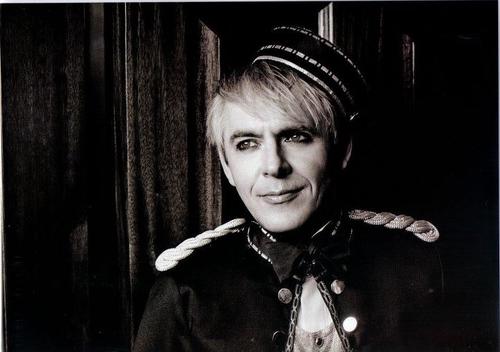 There was a big buzz because English bands didn’t come over that much at that time and we were part of this new Brit invasion so Andy was absolutely fascinated. He came to our show. After that first time I met him, in 1981, we became very good friends and every time I went to New York I’d see him. I found my old address book in the archives the other day, a tiny leather one, all handwritten. Written in it are my mum, a couple of my cousins, the band members by their first names and then you get to “W” and it says, “Andy Warhol”.
There was a big buzz because English bands didn’t come over that much at that time and we were part of this new Brit invasion so Andy was absolutely fascinated. He came to our show. After that first time I met him, in 1981, we became very good friends and every time I went to New York I’d see him. I found my old address book in the archives the other day, a tiny leather one, all handwritten. Written in it are my mum, a couple of my cousins, the band members by their first names and then you get to “W” and it says, “Andy Warhol”.
What did he think of the book of photography, Interference, which you put out in 1984? Wasn’t that influenced by him?
I’m not sure it was directly influenced but Andy’s influence is everywhere. I know the thought pattern may not be so far removed from something he might have done. They were photographs taken of images on TV sets. I did it because I was on tour in America and I was locked in my hotel room a lot. We couldn’t go out because fans surrounded the entire building. Even if I wanted to go out for a walk it was such a nightmare. We had to get security, divert the fans, go out of a different entrance and the hotel guests would be furious. So I stayed in my room a lot. I was always taking pictures with my Polaroid camera and I looked at one I’d taken of American TV and thought, “Wow! That looks really unusual, I’ve never seen anything like that before." And then I took another and another. I was carrying around an extra suitcase just filled with my Polaroids. That was how it came about and I got Malcolm Garrett to design it. I did an exhibition which was very multimedia. For example, for one little polaroid of a volcano I said, “Let’s build a fourteen foot volcano and can we have lava coming from it,” and because times were so crazy then, we did. We had a yellow brick road that went throughout the whole gallery, 3D projections, and lots of installations where you’d look through these tiny little holes. We also had one of the first video walls, a whole corridor of Hamilton’s Gallery blacked it out with TV screens on both sides, all the way up to the ceiling.
Did Warhol like the book?
He didn’t come over to the exhibition but he said he liked the book. Then again he was very polite. He always said he liked things. Actually when I gave Andy things he’d say [Rhodes does a perfect Warhol voice] “Oh, gee, that’s so great, can I have another one?” I’d say, “Why do you need another one, Andy, I’ve just given you one?” “Oh, because I have to put that one in the time capsule.” He used to put things in these boxes. He wanted one to look at and one to put in box.
What did you make of Warren Cuccurullo’s desire to combine pop music and porn, via his adult films and Rock Rod dildo, around the turn of the millennium?
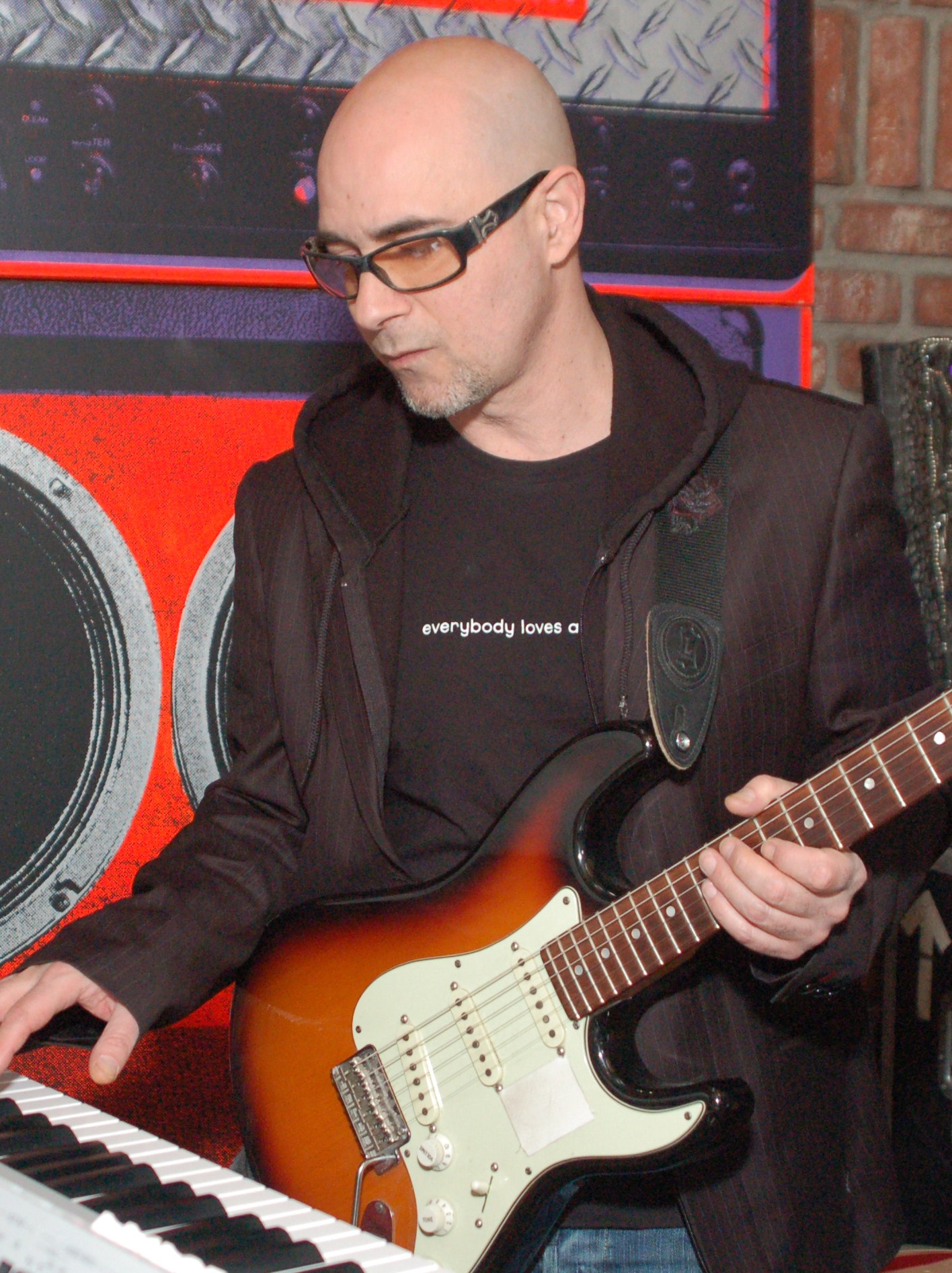
You went into tax exile in France in the mid-Eighties and Jools Holland came and made a documentary about you. What are your memories of that?
Mostly spending more on being in France than we saved on tax. It was getting so, so crazy in England so we thought “The Stones made Exile on Main Street in the south of France - let’s go there and make an album.” We got the RAK mobile studio truck and parked it outside this big old house in the south of France. We didn’t use it, much, though because there were far too many distractions. Juan-le-Pins was down the road which was full of beautiful girls wearing shorts and high heels. Somehow people just disappeared during the daytime. All these things we were discovering because we hadn’t really spent a great deal of time anywhere other than on tour or in England. We didn’t get an awful lot done there. Then we went to Montserrat because we thought it was even further away and more exotic. We got the beginnings of “The Reflex” there. In hindsight everything was completely out of control but there was enough budget flying around that we were able to do these things. We got a really bizarre tension-filled album out of it, which is Seven and the Ragged Tiger. I didn’t wanted to listen to it for years but I did recently and it has an energy to it, you can feel the stress and tension and panic that was in the whole unit at that time. We were just being chased everywhere.
Watch the video for "Ordinary World"
Did the success of the wedding album he success of The Wedding Album in 1993, after a commercial fallow spell, take the band by surprise?
In 1989 I could see the doors closing on the Eighties. I thought, “OK, there’s a lot of people who would like to see us locked in here. Music was changing dramatically. The beginnings of techno music and rave, and grunge was just exploding in America. We felt a little sidelined because we could never have been a band that just jumped on a bandwagon and there wasn’t much space in the media or on the radio for anything that wasn’t new. We made the album Liberty which I think is the weakest of our records. John and I have been talking about doing a director’s cut of that, a redux, because I think it could have been a lot better. It was the first album we put out that didn’t have a big hit single on it so we really had some soul-searching to do. We went back in the studio, boiled everything down to the bare minimum and said, “Let’s write songs. The only way we’re going to survive is if the songs are good enough to compete with whatever’s out there.” When we wrote “Ordinary World” we knew we had something very special but we didn’t know if it would fit in. “Come Undone” came at the end, actually, when we’d finished the album. And “Too Much Information” was a very special track to me, one of our more missed songs because it didn’t become a huge hit. Simon nailed a great opening line – “Destroyed by MTV.” When that album came out we were on tenterhooks and its success was definitely a surprise.
Which is your favourite Duran Duran video?
I still rather like “The Chauffeur” which we’re not in but it’s very Helmut Newton-style. The director did a magnificent job on a very small budget, very vibey, strangely sexy still, and I often get thanked for that video by men of a certain age and some women too. I like the video for the Arcadia song “Missing” which was done by an experimental photographer called Dean Chamberlain, incredibly beautiful and done a frame at a time. That’s the most poetic video, Of the big old Duran videos, probably “Wild Boys” because that’s the closest we got to making our own Hollywood movie. It was insane doing it. We had about five sound stages at Shepperton and extras everywhere, fire-eaters, robotics professors - it was a trip.
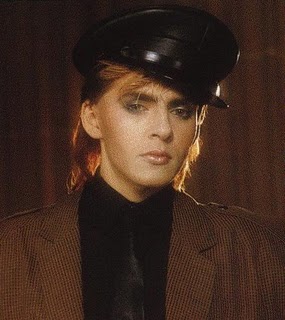 What were the band’s feelings when your original singer, Stephen “Tin Tin” Duffy, had a few hits in the mid-Eighties?
What were the band’s feelings when your original singer, Stephen “Tin Tin” Duffy, had a few hits in the mid-Eighties?
Because things had gone well for us I don’t think we begrudged Stephen anything. Had Stephen done really well and we didn’t, it may well have been a different story. I always thought Stephen had a fantastic talent. When he was our singer at the beginning I thought, “That’s it, we’ve got our band, this is going to be it.” When Stephen left John and I were really shocked. We couldn’t imagine why. We were starting to do really well. We’d been onstage at Barbarella’s supporting Fashion who were the big Birmingham band at the time. It was a very difficult time for him when suddenly we became successful and he’d got on the wrong train, but then he did have success with “Kiss Me”. It was a great song and I saw him at Danceteria in New York round that time. We laughed and chatted.
And you got back together with him in the late Nineties to make Dark Circles, an album based on the earliest incarnation of Duran Duran.
Yes, as The Devils. We imagined what it would have been like if we’d made that first album together and used a lot of the songs. We only used gear from that period. Stephen was meticulous about it being completely authentic, nothing from after 1978.
Thinking back on those times, do you feel any kindred where One Direction are at right now?
I can understand what the tensions are when you’re locked into rooms and literally can’t go anywhere because you cause a fuss. At first that’s quite an exhilarating adrenaline buzz but you quickly realise you’re becoming a prisoner of your own success, So, yes, from that point of view I should think things are quite difficult. Also, one thing I’m eternally grateful for is that there wasn't the kind of technology then that we have now - camera phones on every second of everything, then putting it online immediately. Some of the things that happened after our shows, my God, if those things had been online, I dread to think. I presume they’re having to behave rather better than we did.
Watch the video for "The Chauffeur"
Explore topics
Share this article
Add comment
The future of Arts Journalism
You can stop theartsdesk.com closing!
We urgently need financing to survive. Our fundraising drive has thus far raised £33,000 but we need to reach £100,000 or we will be forced to close. Please contribute here: https://gofund.me/c3f6033d
And if you can forward this information to anyone who might assist, we’d be grateful.

Subscribe to theartsdesk.com
Thank you for continuing to read our work on theartsdesk.com. For unlimited access to every article in its entirety, including our archive of more than 15,000 pieces, we're asking for £5 per month or £40 per year. We feel it's a very good deal, and hope you do too.
To take a subscription now simply click here.
And if you're looking for that extra gift for a friend or family member, why not treat them to a theartsdesk.com gift subscription?
more New music
 Music Reissues Weekly: The Hamburg Repertoire
Perplexing compendium of songs The Beatles covered while playing the German port city
Music Reissues Weekly: The Hamburg Repertoire
Perplexing compendium of songs The Beatles covered while playing the German port city
 Album: Dr Robert & Matt Deighton - The Instant Garden
A couple of old mods waft into delightfully Seventies hippy territory
Album: Dr Robert & Matt Deighton - The Instant Garden
A couple of old mods waft into delightfully Seventies hippy territory
 Album: Self Esteem - A Complicated Woman
Dissecting the utter tripe 21st-century western women navigate every day. In song!
Album: Self Esteem - A Complicated Woman
Dissecting the utter tripe 21st-century western women navigate every day. In song!
 Album: Jenny Hval - Iris Silver Mist
A challenging yet rewarding experimental album
Album: Jenny Hval - Iris Silver Mist
A challenging yet rewarding experimental album
 Album: Billy Idol - Dream Into It
Immense charm and uniqueness shine through, but too much leaning into the generic
Album: Billy Idol - Dream Into It
Immense charm and uniqueness shine through, but too much leaning into the generic
 Album: Viagra Boys - Viagr Aboys
Louder, weirder and all the way in
Album: Viagra Boys - Viagr Aboys
Louder, weirder and all the way in
 Music Reissues Weekly: 1001 Est Crémazie
Privately pressed Canadian jazz album resurfaces for its 50th anniversary
Music Reissues Weekly: 1001 Est Crémazie
Privately pressed Canadian jazz album resurfaces for its 50th anniversary
 Album: Maria Somerville - Luster
Irish musical impressionist embraces shoegazing
Album: Maria Somerville - Luster
Irish musical impressionist embraces shoegazing
 Album: Ronny Graupe's Szelest - Newfoundland Tristesse
A deep, subtle and constantly engaging album
Album: Ronny Graupe's Szelest - Newfoundland Tristesse
A deep, subtle and constantly engaging album
 Album: Gigspanner Big Band - Turnstone
Third album from British folk’s biggest big band
Album: Gigspanner Big Band - Turnstone
Third album from British folk’s biggest big band
 Album: Mark Morton - Without the Pain
Second solo album from Lamb of God guitarist lays down hefty southern boogie
Album: Mark Morton - Without the Pain
Second solo album from Lamb of God guitarist lays down hefty southern boogie
 Manic Street Preachers, Barrowland, Glasgow review - elder statesmen deliver melody and sing-a-longs
The trio ran through new songs, obscure oldies and big hits in a career spanning set
Manic Street Preachers, Barrowland, Glasgow review - elder statesmen deliver melody and sing-a-longs
The trio ran through new songs, obscure oldies and big hits in a career spanning set

Comments
This was a great interview. I